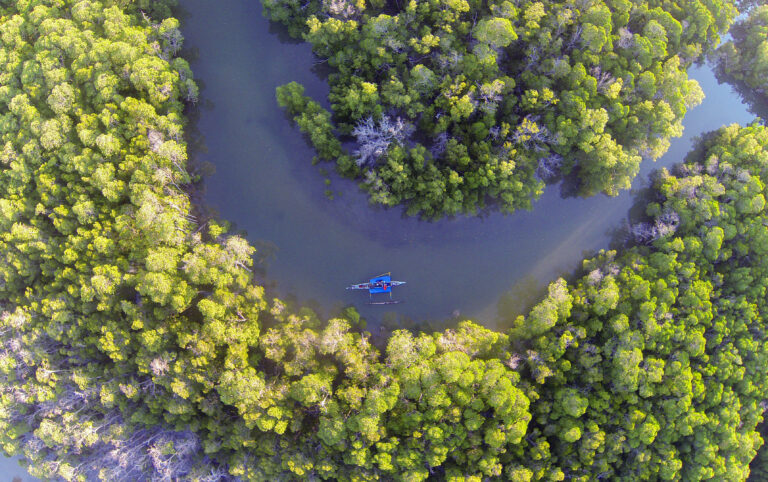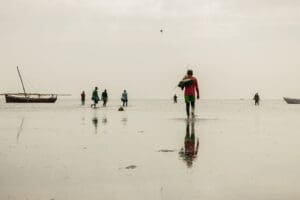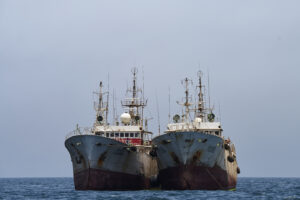New research published in the international journal ‘Forests’ reveals for the first time the carbon storage potential of mangroves in the arid region of southwest Madagascar, and also highlights the pressure that these important local resources are under.
Focused on the mangroves of Helondrano Fagnemotse (Baie des Assassins) in the Velondriake locally-managed marine area (LMMA), researchers found that 455 tonnes of carbon are stored in one hectare of the denser, higher stature mangroves in the bay. But what does this equate to in reality? Well, if one hectare were to be deforested, potentially 1,668 tonnes of CO2 would be emitted into the atmosphere, which is equivalent to almost 4 million miles driven by an average passenger vehicle!
While this sounds like a lot, compared to mangroves in wetter, more humid areas of the tropics, the amount of carbon stored in the mangroves of Helondrano Fagnemotse is relatively small.
However, this does not diminish the importance of the mangroves to local people. By acting as a nursery and habitat for numerous fish species, as well as a natural barrier against storm surges, these forests are critical to the livelihoods and wellbeing of the residents of Velondriake LMMA.
Despite this importance our research shows that the mangroves are under increasing pressure, with almost 50 hectares being deforested for timber or building lime production between 2002 and 2014. Forest degradation is also an increasing issue in the bay, with 162 hectares – equivalent to about 232 football pitches – transitioning from dense to sparser forest over the same time period.
Due to the strong local dependence on mangrove resources and the lack of viable alternatives in this remote and arid region, total, strict conservation is not a viable option if local livelihoods are to be unaffected. Mangroves are remarkably resilient species, making them suitable for locally-led sustainable harvesting and conservation regimes. However, this needs to be made a feasible option for people existing on the edge of, or below, the national poverty line.
Harnessing the value that carbon holds on the voluntary carbon market could generate revenue to support and incentivise locally-led sustainable mangrove management, improve livelihoods and alleviate anthropogenic pressures. As the mangroves of Helodrano Fagnemotse sit within the Velondriake LMMA, there is also the potential for this revenue to support broader community-led marine conservation initiatives. Through the Tahiry Honko initiative, Blue Ventures are working with the Velondriake local management association to turn this idea into reality.
This research builds on previous Blue Ventures papers that publish mangrove carbon stocks and loss rates at two other sites in Madagascar, as well as several focused on the national scale. By highlighting not only the carbon storage capacity of mangroves but also their rapid rates of loss and the social context within which they exist, and thus the need for pragmatic conservation measures, this body of work is supporting both national and international policy improvement and change.
Read the full paper here: Mangrove Carbon Stocks and Ecosystem Cover Dynamics in Southwest Madagascar and the Implications for Local Management
Discover more about the Tahiry Honko initiative:























